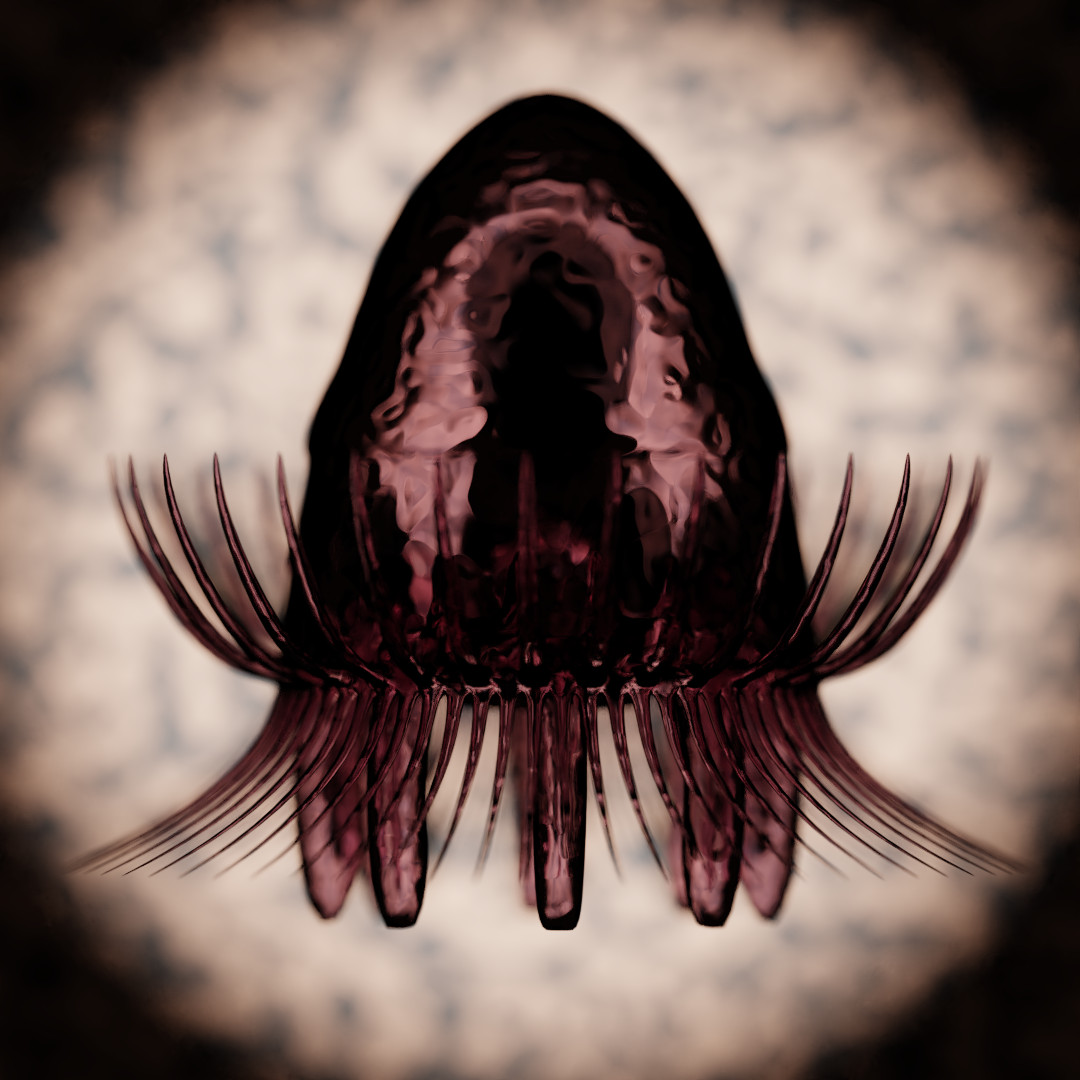Rose Crown
The Rose Crown is a basal Stephenozoan from 480 million years ago on Almaisha, here pictured at x100 magnification. They are omnivorous members of the zooplankton found throughout the upper layers of the water column world wide.
Basic Information
Anatomy
Stephenozoa (Crown Animals) anatomy consists of an octoradial unsegmented body. It is unclear how to apply terms like ventral, dorsal, anterior and posterior to Stephenozoans, and so proximal distal, are used for tentacles, while medial and lateral are used for most other things. There is no brain or even distinct ganglia, but there is a nerve net similar to that found in cnidarians. The body consists of a bell, a central stomach, and 3 sets of tentacles. Inside the bell are 8 gonads each of which produces both spermatozoa and ova. The stomach is surmounted by a nephridium. The three sets of tentacles include 16 motive tentacles, 32 feeding tentacles, and 8 "jaw" tentacles. The motive tentacles are used to swim. The feeding tentacles are chemo and touch receptors and also used to snare food with a sticky secretion. The "jaw" tentacles grab food particles from the feeding tentacles and move it to the stomach. Rose Crowns are small enough to not need a circulatory system, and are morphologically acoelomate.
Genetics and Reproduction
Stephenozoans are diploid creatures when they encounter each other they meat tentacle end to tentacle end and exchange gametes in the space between them.
Growth Rate & Stages
The ovum will develop into a sphere of cells, the a blastopore will develop, and jaw tentacles will develop by cells folding around the blastopore. All this occurs without feeding and the total volume is equal to that of the original ovum, at that point the organism will start feeding, primarily on single celled organisms, and it will grow until it reaches a predetermined number of cells, dependent on species.
Additional Information
Geographic Origin and Distribution
Worldwide
Perception and Sensory Capabilities
The Rose Crown cannot detect light, but its feeding tentacles are sensitive to scent, and direct the creature towards food.
EXTINCT
Genetic Descendants
Scientific Name
Stephanos rosea
Origin/Ancestry
Stephenozoa
Lifespan
50 local days
Average Length
0.3mm
Remove these ads. Join the Worldbuilders Guild











Comments